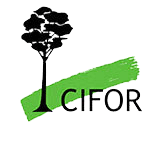Fuel wood is and will remain an important pillar within the energy mix in Sub-Sahara Africa and constitutes a huge potential for the economy at all scales. Its link to food and nutrition security is critical: 50% of forest degradation and 10–20% of forest destruction in the region is caused by wood energy exploitation contributing to land degradation and desertification.
Rehabilitating degraded land by increasing the number of trees in the landscape is a key element for sustainable wood energy production and the reduction of the pressure on natural forests. Both high productive plantations and agroforestry can contribute to the sustainable development of the wood-energy value chain, leading to a significant generation of supplementary revenue, especially for rural households.
In the north of Madagascar, the German development cooperation (GIZ) developed a specific approach based on individual allocation of wood-energy afforestation plots to local households on degraded land. To date, about 9,000 hectares are managed by about 3,000 households each holding an individual land title.
Growing trees on-farm also contributes to sustainable cooking. For example in a village in Embu country, Kenya, agroforestry is the main source of firewood for 65% of households.
Sustainably produced wood energy addresses major sustainable development challenges. It contributes to poverty alleviation by providing a complementary income, making families more resilient to climate change. It provides sustainable energy for rural and urban households, and helps protect forests and biodiversity by reducing pressure on them. If combined with the rehabilitation of degraded land, a direct link to the goal of land degradation neutrality is given. The SDGs 1, 5, 7 and 15 are directly addressed.
The objective of the session is to discuss the potential of afforestation and agroforestry for wood-energy production to help landscape restoration efforts. Participants will see a short film and presentation, followed by a panel discussion with involvement of the audience.
Key questions addressed
- How can the apparent antagonists wood-energy production and landscape restoration come together?
- Do we really need sustainably produced wood energy for large-scale and small-scale landscape restoration strategies?
- What must be done to promote the complementary approaches afforestation/reforestation and agroforestry for sustainable wood energy in sub-Saharan Africa?
Background reading
Modernization of wood energy in northern Madagascar
Commercial Woodfuel Production-Experience from Three Locally Controlled Wood Production Models
Can there be energy policy in Sub-Saharan Africa without biomass?
Opportunities and challenges of landscape approaches for sustainable charcoal production and use
Climate-Smart Landscapes: Multifunctionality in Practice (Chapter 14)






































